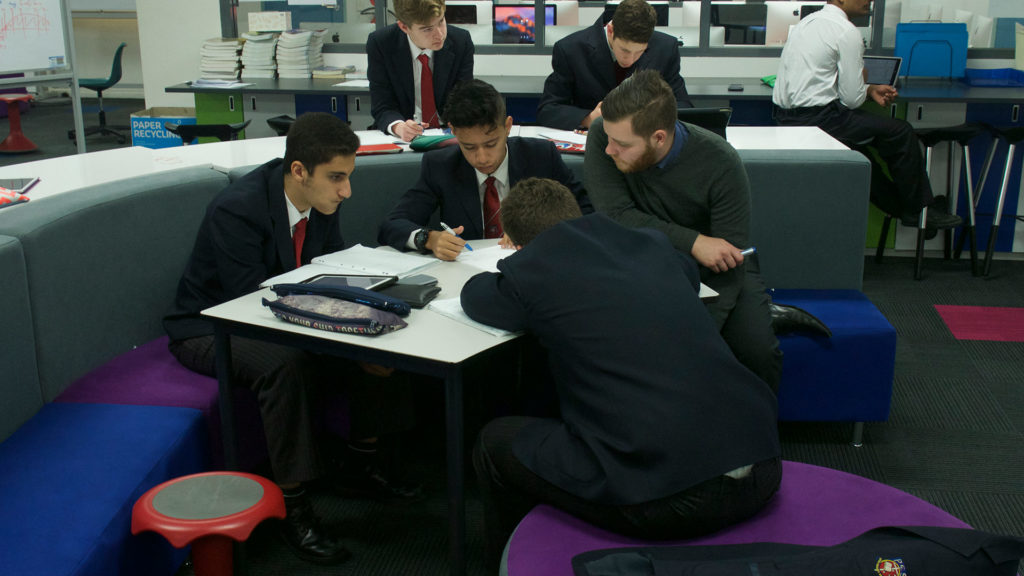As the workforce demands more agile, innovative employees, the skills required from future job seekers are not the same as they once were. Passive learning and industrial education systems are outmoded – they simply won’t facilitate the same level of thinking required for students to succeed in the future.
Instead, students today are encouraged to embrace the 6Cs of 21st century learning.
- Critical Thinking
- Collaboration
- Creativity
- Communication
- Connectivity
- Culture
Unfortunately, while curriculum and pedagogy can evolve, education advances are stymied not only by the traditional classroom design of rows of chairs and desks facing front, but traditional school furniture as well. Think thick, heavy, immovable desks; chairs with tiny tables ideal only for individual work; and hard uncomfortable seats which distract from engagement in the classroom.
Understanding the integral role of furniture and learning spaces in transforming education, we set out to create unique and innovative designs that would enhance learning engagement.
Furniture and next generation learning spaces that facilitate 21st century learning need to be designed to encourage student engagement in order to help students cultivate the 6Cs. The question is how can educators ensure that their learning spaces and furniture can achieve this?
Student-Centered
Rows of desks facing forward are conducive only to passive learning. To increase engagement in the classroom, pedagogy and learning space design has evolved to become student-centered. Furniture needs to empower students to take ownership of their learning experience. In order to do so, learners need to be able to quickly reconfigure their classrooms to suit their preferred working style and the task at hand. Lightweight and easily movable furniture is essential, but it also needs to be robust enough to meet the needs of an educational environment and heavy use by students.
Suited to a Variety of Needs
The same type of seat and surface for every student unfortunately will not cut it anymore. Any teacher will recognize a wide range of needs and preferences for each of their students. There is the visual learner, the restless learner, the tactile learner, learners who prefer to sit high, those who are comfortable tucked away from others, and the list goes on. NorvaNivel recognizes the different requirements of all types of students, and its range of furniture has features that address all of the different senses and modalities of learning.
Comfortable
Furniture for 21st century learning environments often have qualities of comfort versus traditional furniture – soft edges, soft seating, smooth textures, among other design mechanisms. Some educators worry that students will be too comfortable and easily distracted! For most the opposite is true. Instead of being distracted by hard seating and pain, which causes restlessness after a short period, a student that is more comfortable can truly be engaged.
Conducive to Collaboration
While traditional desks can be arranged into different configurations, flexible furniture for next generation learning spaces is actually designed specifically for group collaboration. NorvaNivel’s PLEKTRUM™ Table, for example, is designed as a soft triangle. The shape encourages small groups of learners to lean in and work closely together. Available with an optional writable surface, learners can capture notes and ideas easily. Their Flip Tables with writable surfaces allow groups to work together and then present ideas to the whole class.
Enhances Concentration
Different types of learners work better in different situations. The tactile learner concentrates better when their hands are kept busy. For the restless learner, slight movement can enhance concentration. When students’ needs are being met in their learning environment they can fully engage in the classroom.
Summary
Researchers, educators, and psychologists have determined a number of different ways children and adults learn best. No longer is it appropriate for students to try to sit quietly at their old school desks as the teacher stands lecturing in the front of the classroom. The experts have identified multiple types of learners, each who learn primarily through different senses. All of these learners are present in every single classroom in the world. We collaborate with schools to create inclusive learning environments to meet the needs of all of these learners.

